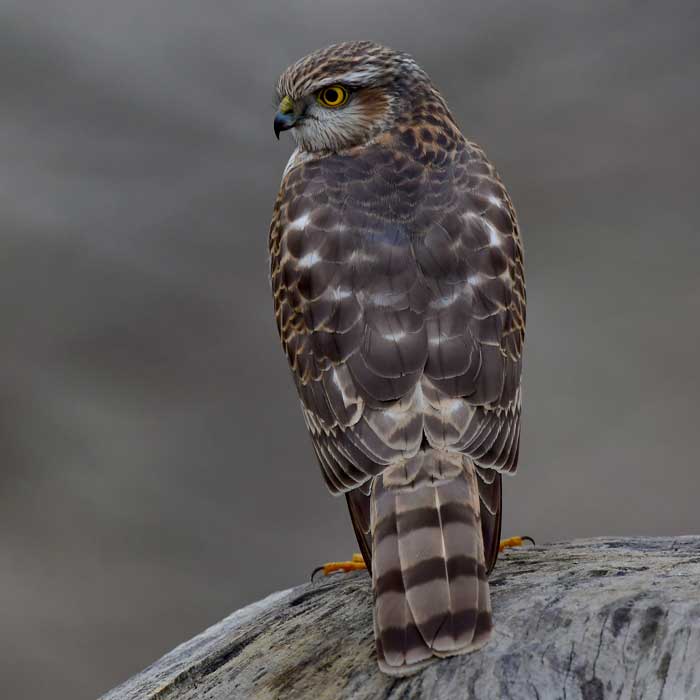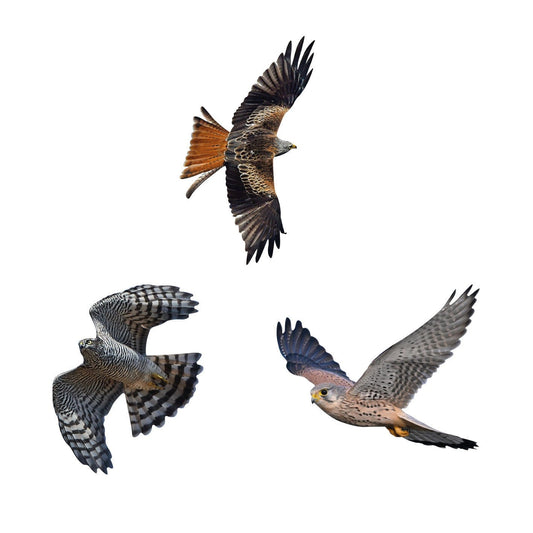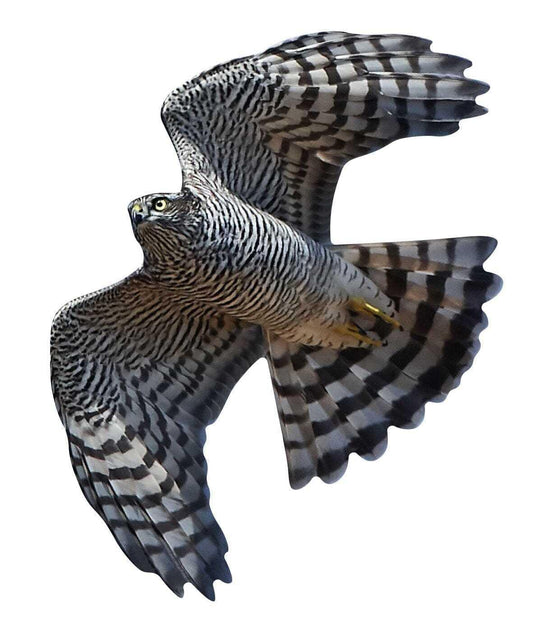
Sparrowhawk
An agile bird of prey with a preference for songbirds, the sparrowhawk is a fascinating example of the diversity of nature in urban and rural areas. This fact sheet provides a detailed overview of the biology and ecology of the sparrowhawk and highlights the importance of its protection and conservation in natural habitats.
Sparrowhawk Products
-
Bird protection set of 3 - small
Regular price 14,90€Regular priceUnit price / per -
Animal stand Sparrowhawk - flying
1 reviewRegular price 39,90€Regular priceUnit price / per -
Animal stand Sparrowhawk - sitting
Regular price From 19,90€Regular priceUnit price / per -
Bird protection set of 3 - large
Regular price 36,90€Regular priceUnit price / per -
Sparrowhawk - flying (bird protection)
Regular price 12,90€Regular priceUnit price / per -
Animal display sparrowhawk - sitting - outdoor set
No reviewsRegular price 27,70€Regular priceUnit price / per -
Animal display sparrowhawk - flying - outdoor set
No reviewsRegular price 45,30€Regular priceUnit price / per
Profile: Sparrowhawk
-
Scientific classification
- Class: Aves (birds)
- Order: Accipitriformes (birds of prey)
- Family: Accipitridae (Accipitridae)
- Genus: Accipiter
- Species: A. nisus (sparrowhawk)
-
Physical characteristics
- Size: Body length of 28-38 cm
- Wingspan: 55-70 cm
- Weight: 150-340 g
- Special features: Small bird of prey with a long tail and short, broad wings, dark plumage on the upper side, light horizontal stripes on the underside, red eyes.
-
Habitat and distribution
- Common regions: Europe, North Africa, parts of Asia
- Habitat: Diverse, from forests to open countryside to urban areas; prefers areas with abundant tree cover.
-
Nutrition
- Diet: Carnivore
- Typical food: Small birds, especially songbirds such as sparrows, tits and finches, but also occasionally small mammals and insects.
-
Reproduction and lifestyle
- Breeding season: spring to summer
- Nest building: In trees or dense bushes, often well hidden
- Egg laying: 3-6 eggs per clutch
- Brood care: Female takes over most of the brood care, male provides food.
- Social structure: Mostly in pairs or small family groups.
-
Lifespan and protection status
- Life expectancy: Up to 10 years in the wild
- Threat status: Not threatened, but habitat loss and traffic accidents may affect local populations.
- Protective measures: preservation and protection of habitats, avoidance of pesticide use in gardens and agriculture.







